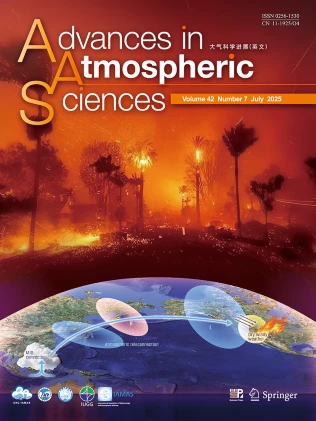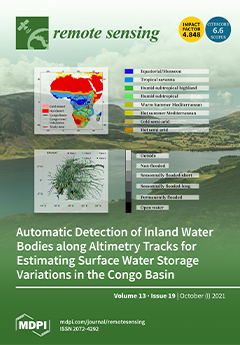2025

Global Retrieval of Harmonized Microwave Land Surface Emissivity Leveraging MultiSensor Measurements from GMI, AMSR2 and MWRIs
Jiheng Hu, et al.
___ Under review. 2025 Data
We present an innovative framework to retrieve harmonized emissivity from observations of five passive microwave sensors. Six geostationary visible and infrared imagers onboard geostationary platforms were collocated to jointly provide clear-sky masks covering the globe. Sophisticated intercalibrations were applied to scale all emissivity subsets to be aligned with the GMI retrievals.
Global Retrieval of Harmonized Microwave Land Surface Emissivity Leveraging MultiSensor Measurements from GMI, AMSR2 and MWRIs
Jiheng Hu, et al.
___ Under review. 2025 Data
We present an innovative framework to retrieve harmonized emissivity from observations of five passive microwave sensors. Six geostationary visible and infrared imagers onboard geostationary platforms were collocated to jointly provide clear-sky masks covering the globe. Sophisticated intercalibrations were applied to scale all emissivity subsets to be aligned with the GMI retrievals.

Global Microwave Land Surface Emissivity Under all Weather Conditions Derived From Fengyun-3D Satellite Observations
Qingyang Liu#, Jiheng Hu#, Peng Zhang, Yonghong Liu, Rui Li*
Journal of Geophysical Research: Atmospheres 2025 Emissivity
We proposed in this paper a global all-weather microwave land surface emissivity (MLSE) data set (2020--2022), which is retrieved combining passive microwave observations of FY3D/MWRI, cloud properties retrievals of FY3D/MERSI. We evaluated it against four existing reference datasets which are not available at present, which showed comapared accuracy and seasonality of our product to these reference data. The dataset possesses promising value in estimating terriestrial ET/GPP intensity, advancing the over-land precipitation retrieval techiques, as well as acting as important proxies of plant moisture status and the wildfile risk at global scale.
Global Microwave Land Surface Emissivity Under all Weather Conditions Derived From Fengyun-3D Satellite Observations
Qingyang Liu#, Jiheng Hu#, Peng Zhang, Yonghong Liu, Rui Li*
Journal of Geophysical Research: Atmospheres 2025 Emissivity
We proposed in this paper a global all-weather microwave land surface emissivity (MLSE) data set (2020--2022), which is retrieved combining passive microwave observations of FY3D/MWRI, cloud properties retrievals of FY3D/MERSI. We evaluated it against four existing reference datasets which are not available at present, which showed comapared accuracy and seasonality of our product to these reference data. The dataset possesses promising value in estimating terriestrial ET/GPP intensity, advancing the over-land precipitation retrieval techiques, as well as acting as important proxies of plant moisture status and the wildfile risk at global scale.

Regional Gross Primary Productivity Estimation Using Passive Microwave Observations From China's Fengyun-3B Satellite
Binbin Song, Jiheng Hu, Yipu Wang, Dong Li, Peng Zhang, Yu Wang, Lei Zhong, Rui Li*
Journal of Geophysical Research: Atmospheres 2025 Ecohydrology
In this study, we present the development and validation of a microwave-based regional gross primary productivity (GPP) estimation method, EDVI-GPP, using the Emissivity Difference Vegetation Index (EDVI) retrieved from the China's Fengyun-3B satellite over East Asia for the period 2016–2018. At daily and regional scales, our estimates are substantiated with in situ GPP measurements from 18 eddy covariance flux sites and comparative analysis against four satellite-derived GPP products.
Regional Gross Primary Productivity Estimation Using Passive Microwave Observations From China's Fengyun-3B Satellite
Binbin Song, Jiheng Hu, Yipu Wang, Dong Li, Peng Zhang, Yu Wang, Lei Zhong, Rui Li*
Journal of Geophysical Research: Atmospheres 2025 Ecohydrology
In this study, we present the development and validation of a microwave-based regional gross primary productivity (GPP) estimation method, EDVI-GPP, using the Emissivity Difference Vegetation Index (EDVI) retrieved from the China's Fengyun-3B satellite over East Asia for the period 2016–2018. At daily and regional scales, our estimates are substantiated with in situ GPP measurements from 18 eddy covariance flux sites and comparative analysis against four satellite-derived GPP products.

Jupiter's Auroral Ionosphere: Juno Microwave Radiometer Observations of Energetic Electron Precipitation Events
Ananyo Bhattacharya*, Hunter Waite, Steven Levin, Fabiano Oyafuso, Paul Steffes, Yue Lu, Randall Gladstone, Joshua Kammer, Tom Nordheim, Chris Paranicas, Thomas Cravens, James Sinclair, Jiheng Hu, Cheng Li, Sushil Atreya, Heidi Becker, Scott Bolton
Journal of Geophysical Research: Space Physics 2025 Jupiter aurora
In this paper, we describe progress on the analysis of Juno MWR observations of the northern aurora and simulate the effects of heating and electron impact ionization processes due to high energy particle precipitation events in Jupiter's auroral ionosphere. Electron precipitation intensities at energies up to 10 MeV inferred from the Jupiter Energetic-Particle Detector Instrument (JEDI) and Ultraviolet Spectrograph (UVS) instruments are used as a Northern Hemisphere case study to understand the energy deposition and ionization processes in the lower stratosphere, and subsequently used to estimate the microwave and ultraviolet opacity of the auroral region.
Jupiter's Auroral Ionosphere: Juno Microwave Radiometer Observations of Energetic Electron Precipitation Events
Ananyo Bhattacharya*, Hunter Waite, Steven Levin, Fabiano Oyafuso, Paul Steffes, Yue Lu, Randall Gladstone, Joshua Kammer, Tom Nordheim, Chris Paranicas, Thomas Cravens, James Sinclair, Jiheng Hu, Cheng Li, Sushil Atreya, Heidi Becker, Scott Bolton
Journal of Geophysical Research: Space Physics 2025 Jupiter aurora
In this paper, we describe progress on the analysis of Juno MWR observations of the northern aurora and simulate the effects of heating and electron impact ionization processes due to high energy particle precipitation events in Jupiter's auroral ionosphere. Electron precipitation intensities at energies up to 10 MeV inferred from the Jupiter Energetic-Particle Detector Instrument (JEDI) and Ultraviolet Spectrograph (UVS) instruments are used as a Northern Hemisphere case study to understand the energy deposition and ionization processes in the lower stratosphere, and subsequently used to estimate the microwave and ultraviolet opacity of the auroral region.

Estimation of Fire Counts and Fire Radiative Power Using Satellite Optical and Microwave Vegetation Indices With Random Forest Method
Jiawei Duan, Jiheng Hu, Yuyun Fu, Qiuyang Liu, Rui Li*, Yipu Wang
Journal of Geophysical Research: Atmospheres 2025 Wild Fire
The satellite microwave emissivity difference vegetation index (EDVI) has been used in previous studies to estimate FCs and FRP using traditional multivariate linear regression models. However, the nonlinear effects and contributions of numerous factors that affect forest fires cannot be disentangled by this model. Using the random forest (RF) model, this study utilized multiple EDVIs and the optical normalized difference vegetation index (NDVI) as key fuel properties to resolve the physical driving mechanisms of forest fires and to estimate the daily FCs and FRP over East Asia.
Estimation of Fire Counts and Fire Radiative Power Using Satellite Optical and Microwave Vegetation Indices With Random Forest Method
Jiawei Duan, Jiheng Hu, Yuyun Fu, Qiuyang Liu, Rui Li*, Yipu Wang
Journal of Geophysical Research: Atmospheres 2025 Wild Fire
The satellite microwave emissivity difference vegetation index (EDVI) has been used in previous studies to estimate FCs and FRP using traditional multivariate linear regression models. However, the nonlinear effects and contributions of numerous factors that affect forest fires cannot be disentangled by this model. Using the random forest (RF) model, this study utilized multiple EDVIs and the optical normalized difference vegetation index (NDVI) as key fuel properties to resolve the physical driving mechanisms of forest fires and to estimate the daily FCs and FRP over East Asia.
2022

Spatiotemporal Variations of Microwave Land Surface Emissivity (MLSE) over China Derived from Four-Year Recalibrated Fengyun 3B MWRI Data
Rui Li, Jiheng Hu, Shengli Wu, Peng Zhang*, Husi Letu, Yu Wang, Xuewen Wang, Yuyun Fu, Renjun Zhou, Ling Sun
Advances in Atmospheric Sciences 2022
MLSEs during 7 July 2015 to 30 June 2019 over China under both clear and cloudy sky conditions were retrieved using measurements of recalibrated microwave brightness temperatures (Tbs) from Fengyun-3B Microwave Radiation Imager (FY-3B MWRI), combined with cloud properties derived from Himawari-8 Advanced Himawari Imager (AHI) observations.
Spatiotemporal Variations of Microwave Land Surface Emissivity (MLSE) over China Derived from Four-Year Recalibrated Fengyun 3B MWRI Data
Rui Li, Jiheng Hu, Shengli Wu, Peng Zhang*, Husi Letu, Yu Wang, Xuewen Wang, Yuyun Fu, Renjun Zhou, Ling Sun
Advances in Atmospheric Sciences 2022
MLSEs during 7 July 2015 to 30 June 2019 over China under both clear and cloudy sky conditions were retrieved using measurements of recalibrated microwave brightness temperatures (Tbs) from Fengyun-3B Microwave Radiation Imager (FY-3B MWRI), combined with cloud properties derived from Himawari-8 Advanced Himawari Imager (AHI) observations.
2021

Satellite Retrieval of Microwave Land Surface Emissivity under Clear and Cloudy Skies in China Using Observations from AMSR-E and MODIS
Jiheng Hu, Yuyun Fu, Peng Zhang, Qilong Min, Zongting Gao, Shengli Wu, Rui Li*
Remote Sensing 2021 IF=4.1
In this study, MLSE in China under both clear and cloudy sky conditions was retrieved using measurements from Aqua AMSR-E, Aqua MODIS, and ECMWF ERA-20C. The retrieved MLSE is assessed by compared with other existing clear-sky emissivity products and the VOD product, showing high consistencies across China though noticeable discrepancies are observed in due to different sources of input brightness temperature version and skin temperature.
Satellite Retrieval of Microwave Land Surface Emissivity under Clear and Cloudy Skies in China Using Observations from AMSR-E and MODIS
Jiheng Hu, Yuyun Fu, Peng Zhang, Qilong Min, Zongting Gao, Shengli Wu, Rui Li*
Remote Sensing 2021 IF=4.1
In this study, MLSE in China under both clear and cloudy sky conditions was retrieved using measurements from Aqua AMSR-E, Aqua MODIS, and ECMWF ERA-20C. The retrieved MLSE is assessed by compared with other existing clear-sky emissivity products and the VOD product, showing high consistencies across China though noticeable discrepancies are observed in due to different sources of input brightness temperature version and skin temperature.